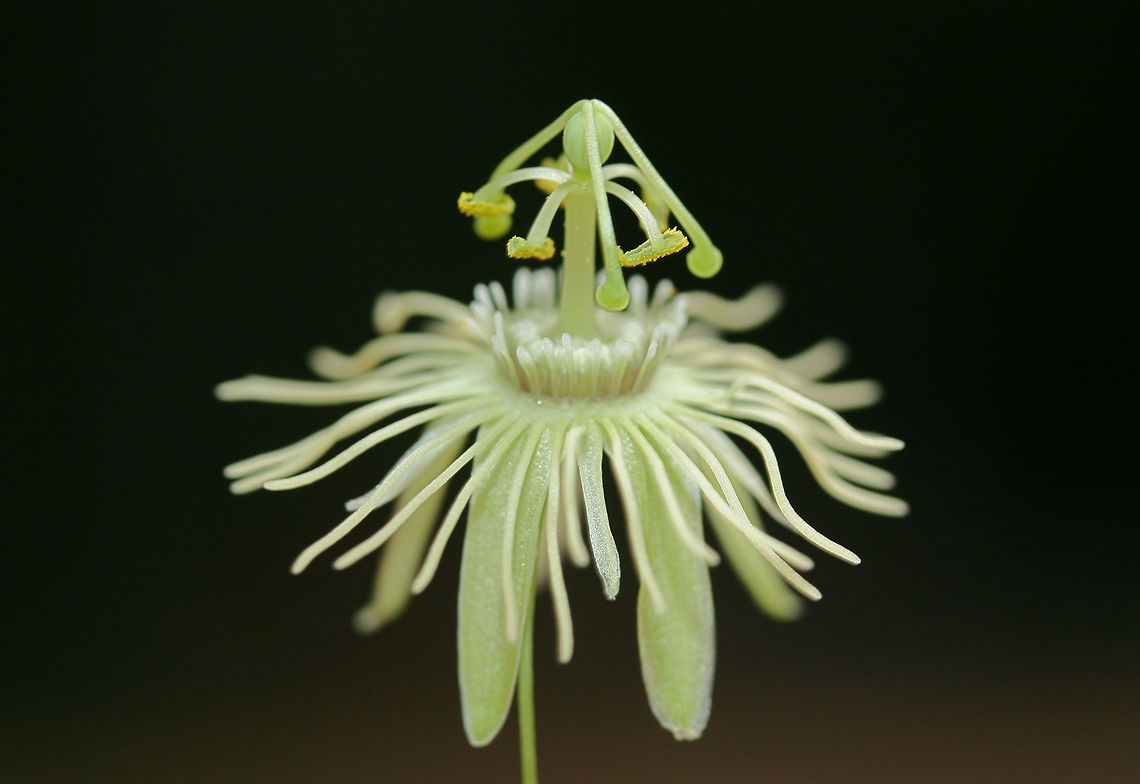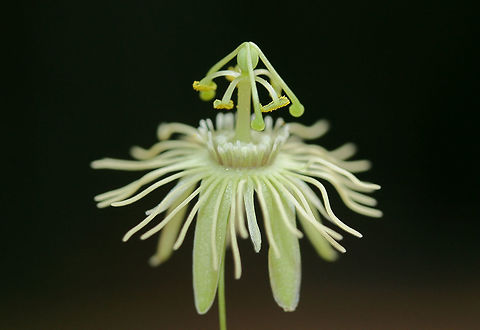 PromotedSpecies introCountry intro
PromotedSpecies introCountry intro
Yellow Passionflower (Passiflora lutea)
The yellow passionflower are finally in bloom! At the base of a ridge at the edge of a dense mixed hardwood/coniferous forest in NW Georgia (Gordon County), US.
Note: These flowers are quite small compared to other passionflower species (only about 1-1.5 cm in diameter).
Unfortunately, a huge storm was on the way when I took this shot. It was rather dark out and the lightning had already started (so I was rushed to get some photos in before we left our land).

''Passiflora lutea'', the yellow passionflower, is a flowering plant in the family Passifloraceae, native North America, in the eastern and south-central parts of the United States from Pennsylvania west to Kansas, and south to Florida and Texas. It is the northernmost species of ''Passiflora'', occurring slightly further north than ''P. incarnata'', and tolerant of winter temperatures down to −15 °C, and even −30 °C for short periods.

comments (21)
Is this on your land? If yes, beware of honesuckle - it can be a real problem for passionflower natives. Posted 7 years ago
As for honeysuckle, my neighbors have a bit of a problem with it on their roadsides, so I'm going to have to keep a close eye on it. Invasives drive me crazy! Luckily, there aren't many invasives near our driveway at this point. Posted 7 years ago
@Lisa: well, your modesty shines through as you apologized for conditions and what not. There's nothing wrong with this photo, it's excellent. Posted 7 years ago
Posted 7 years ago
https://inglesphoto.com/View-Photos-and--Prints/Flower-Photographs/1/thumbs Posted 7 years ago
Spring is in the air in the Northern Hemisphere, so we decided to sprinkle some color on Facebook this week by sharing photos of wildflowers! Flowering plants are the largest and most diverse group of plants, accounting for up to 90% of plant species!
They are often exquisitely beautiful, can be fantastically weird, and may exude pleasant or nasty fragrances. They are an important source of food for an innumerable amount of creatures, including humans. Flowering plants are also a source of medicines, fibers, timber, ornamentals, and so many other commercial products. Flowers truly make our world a better place! #JungleDragon #Wildflowers #Floweringplants #Angiosperms
Want to see more wild, weird, and fabulous flowering plants? Click here:
https://www.jungledragon.com/.../photos/plantae/angiosperms
https://www.facebook.com/jungledragonwildlife Posted 4 years ago